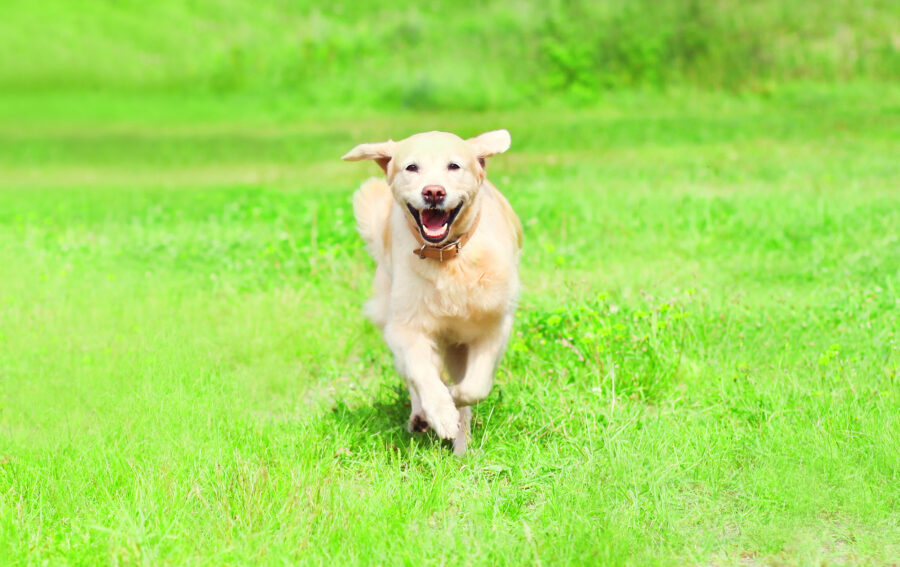
Check out our latest products
Find out how dog rescues work and the many ways you can support their lifesaving efforts — from fostering to fundraising.
Dog rescues play a vital role in the animal community. They help transition dogs from dangerous situations to “fur-ever” homes. Read on for details on how to support dog rescues, and what they do to save and find home for canines in need.
Do rescue organizations differ from shelters?
Unlike a shelter, most dog rescue organizations don’t have a physical location. Volunteer networks typically make up rescues. These networks nurture dogs in temporary foster homes while working to find permanent homes for them.
While many shelters have adopted a no-kill policy, some still euthanize animals due to overcrowding. They may also deem some animals unadoptable due to health or behavioral issues. A rescue focuses on saving the life of every dog wherever possible.
Note: Both rescues and shelters depend on volunteers and donations to continue operating.
Where do all the rescued dogs go?
After removing a dog from danger, the rescue organization arranges accommodations for her – usually a temporary foster home.
Foster volunteers play a key bridging role in saving canine lives. They give dogs a safe place to stay. They also help rehabilitate canine houseguests with physical or behavioral challenges. These challenges could be physical, like parasites or mange, or behavioral issues such as biting or house-soiling.
Rescues also provide temperament testing. This helps identify each dog’s issues, personality traits, and ideal placement — such as homes with cats, kids, or other dogs. This is not a quick and easy process. Dogs often feel overwhelmed during transitions. As a result, temperament tests may not fully reflect how they’ll interact with other animals.
Note: A dog usually reveals her true temperament only after weeks or months of adjustment.
“A dog doesn’t show his true personality until he’s been given time to decompress,” says Amy Powell, CPDT. “A dog’s behavior can be misinterpreted as docile when he is actually scared out of his mind and stunned into passivity.
“As the dog starts to feel more secure, he will begin to claim territory in his surroundings, and undesirable behaviors may begin to appear.” Amy compares this to “a shy child visiting a stranger’s home, who later turns into a wild child the moment he feels comfortable.”
Fostering arrangements can last months or even years, depending on how much support a dog needs.
How can I volunteer for a dog rescue?
The first step is to find a reputable rescue. If you’re looking for quick indicators, however, there unfortunately are none. No association currently certifies or accredits dog rescues. That means you’ll need to do your own research.
Check the rescue’s website. Ask for recommendations from other foster parents or ask the rescue for references. Screen rescues just as carefully as they should screen you. (If the rescue isn’t screening you, look for one that will.)
Note: Be aware that some scammers pose as dog rescues and learn to recognize the red flags.
A good rescue will provide dog-centered support for its volunteers. Look specifically for these characteristics:
- Solid volunteer network in place
- Careful screening of prospective foster parents and adoptive families
- An emphasis on the overall safety and well-being of the dogs
- Temperament testing to correctly match dogs with foster parents
- A veterinarian who covers medical costs
- Dog trainers to assist with behavioral issues
- A policy to return dogs who don’t fit well with their foster families
- Organized adoption events to help permanently re-home dogs
- Equipment and supplies (if available) – e.g. humane collar, leash, crate, food, etc.
Note: You can donate any of the items listed above, if you choose this method of support over volunteering.
Avoid rescues with muddled paperwork or those looking for quick fixes. A good rescue will be particular about the homes where they place dogs. If a rescue doesn’t consider the dog’s long-term well-being, it’s not the right fit.
What are some other roles rescue volunteers can perform?
Although foster parents serve a critical role in the dog rescue community, there are many other ways you can help:
- Transport dogs from bad situations to safety
- Dog-sit or dog-walk
- Locate and connect foster families with adoption events
- Coordinate an adoption event or staff a table
- Educate the public
- Donate funds or supplies
- Become part of a rescue dog’s marketing team
- Write an attractive bio for the dog
- Take a perfect photo to accompany the bio
- Place ads for the dog’s bio
- Find and attend adoption events
- Be part of the adoptive family screening team
- Screen applications
- Perform background checks
- Check references, including former veterinarians
- Give phone interviews
- Perform home visits
- Be part of a buddy system (see sidebar on page xx)
Volunteering, donating, or adopting – exploring how to support dog rescues is very rewarding. Just be sure to do your research. Work only with rescues that prioritize the long-term health, happiness, and safety of their dogs.
Where do rescues find dogs?
Rescue groups save dogs from six main sources:
- High-kill shelters
- Hoarding situations
- Rural areas
- Unwanted senior dogs
- Owner surrenders
- Foreign imports
Rescue groups build relationships with dog suppliers. They often persuade or pay them to surrender unwanted dogs. For example, Beth Buchter and Kathy Styer of Leo’s Helping Paws Rescue, based in Lancaster, Pennsylvania, formed relationships with Amish and Mennonite puppy mill owners who discard unsold puppies.
The rescue often transports 30 to 40 dogs at once, but they can’t save them all. “It’s hard to leave behind those the puppy mills aren’t done with yet,” says Kathy. “There are never enough resources to care for the numbers you want to care for.”
What’s a dog rescue buddy system?
Some rescues build community networks that act as support groups. This buddy system can help answer any questions foster and adoptive parents will undoubtedly have about their new canine family members.
A buddy system helps educate new dog parents. It gives them someone to call for advice — and could mean the difference between a dog being returned or finding a “furr-ever” home.
Post Views: 520


![[PETHROOM] Cat Nail Clipper Trimmer for Indoor Cats with Circular Cut Hole (2mm) | Premium Sturdy Stainless Steel Blade Cat Claw | Safe, Easy, Accurate, Quiet & Fast | Avoid Overcutting](https://m.media-amazon.com/images/I/6156hi88deL._AC_SL1298_.jpg)
![[PETHROOM] Professional Eye Comb for Pets | Stainless Steel Tear Stain Remover for Cats & Dogs | Gentle Round-Head Grooming Tool | Compact & Portable for Eye Gunk Removal](https://m.media-amazon.com/images/I/71+W758uwXL._SL1500_.jpg)
![[petora] BRUSH ON ME Gentle Facial & Eye Comb for Dogs & Cats | Smooth & Stress-Free Tear Stain Remover | Fine-Tooth Grooming Tool with Rounded Tips | Comfortable Grip for Daily Pet Grooming](https://m.media-amazon.com/images/I/81hzVmjgV1L._SL1500_.jpg)









